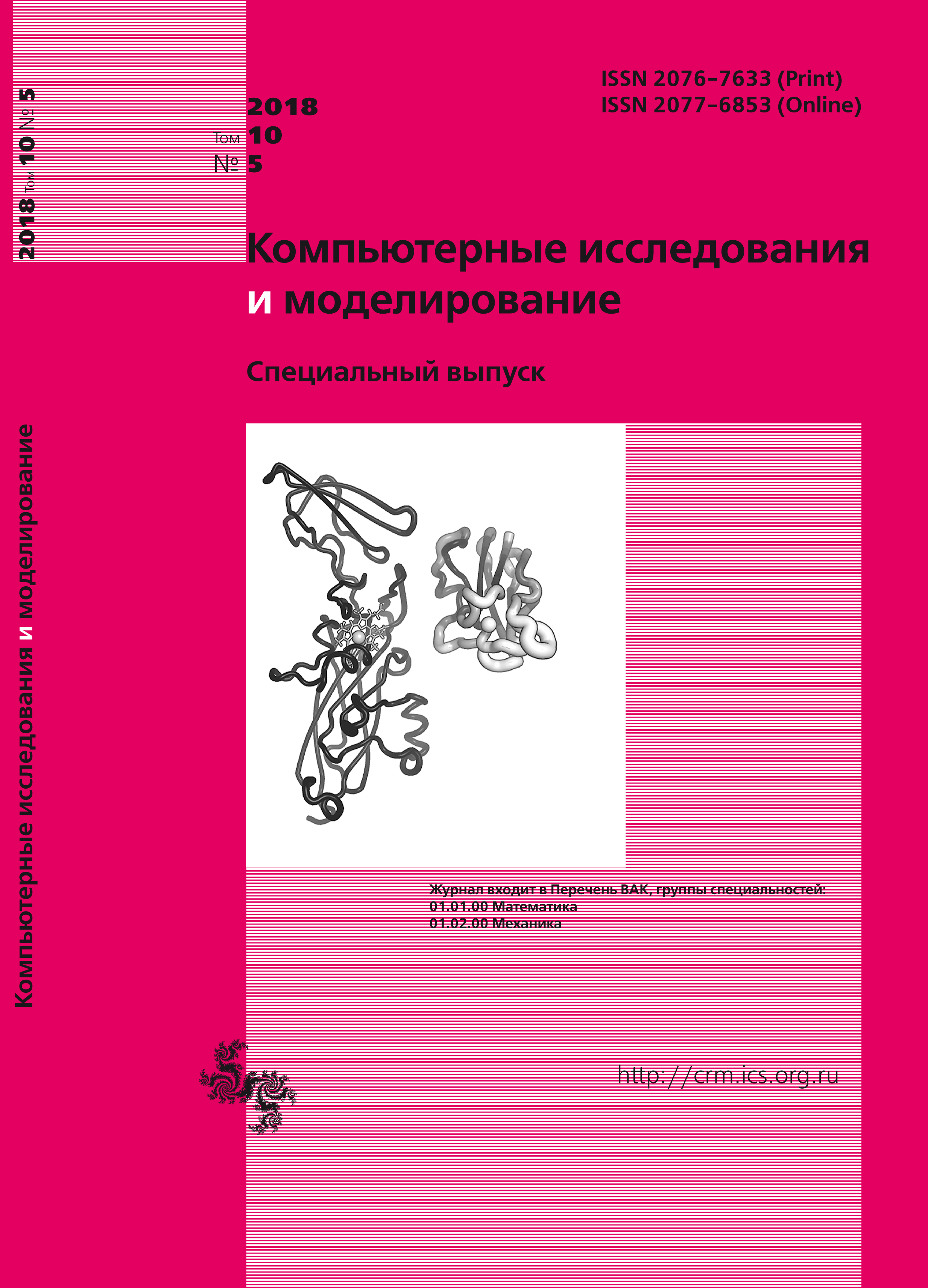All issues
- 2025 Vol. 17
- 2024 Vol. 16
- 2023 Vol. 15
- 2022 Vol. 14
- 2021 Vol. 13
- 2020 Vol. 12
- 2019 Vol. 11
- 2018 Vol. 10
- 2017 Vol. 9
- 2016 Vol. 8
- 2015 Vol. 7
- 2014 Vol. 6
- 2013 Vol. 5
- 2012 Vol. 4
- 2011 Vol. 3
- 2010 Vol. 2
- 2009 Vol. 1
Numerical studies of the parameters of the perturbed region formed in the lower ionosphere under the action of a directed radio waves flux from a terrestrial source
The paper presents a physico-mathematical model of the perturbed region formed in the lower D-layer of the ionosphere under the action of directed radio emission flux from a terrestrial stand of the megahertz frequency range, obtained as a result of comprehensive theoretical studies. The model is based on the consideration of a wide range of kinetic processes taking into account their nonequilibrium and in the two-temperature approximation for describing the transformation of the radio beam energy absorbed by electrons. The initial data on radio emission achieved by the most powerful radio-heating stands are taken in the paper. Their basic characteristics and principles of functioning, and features of the altitude distribution of the absorbed electromagnetic energy of the radio beam are briefly described. The paper presents the decisive role of the D-layer of the ionosphere in the absorption of the energy of the radio beam. On the basis of theoretical analysis, analytical expressions are obtained for the contribution of various inelastic processes to the distribution of the absorbed energy, which makes it possible to correctly describe the contribution of each of the processes considered. The work considers more than 60 components. The change of the component concentration describe about 160 reactions. All the reactions are divided into five groups according to their physical content: ionization-chemical block, excitation block of metastable electronic states, cluster block, excitation block of vibrational states and block of impurities. Blocks are interrelated and can be calculated both jointly and separately. The paper presents the behavior of the parameters of the perturbed region in daytime and nighttime conditions is significantly different at the same radio flux density: under day conditions, the maximum electron concentration and temperature are at an altitude of ~45–55 km; in night ~80 km, with the temperature of heavy particles rapidly increasing, which leads to the occurrence of a gas-dynamic flow. Therefore, a special numerical algorithm are developed to solve two basic problems: kinetic and gas dynamic. Based on the altitude and temporal behavior of concentrations and temperatures, the algorithm makes it possible to determine the ionization and emission of the ionosphere in the visible and infrared spectral range, which makes it possible to evaluate the influence of the perturbed region on radio engineering and optoelectronic devices used in space technology.
Copyright © 2018 Moiseeva D.S., Motorin A.A., Stupitsky E.L.
Views (last year): 17.Indexed in Scopus
Full-text version of the journal is also available on the web site of the scientific electronic library eLIBRARY.RU
The journal is included in the Russian Science Citation Index
The journal is included in the RSCI
International Interdisciplinary Conference "Mathematics. Computing. Education"







